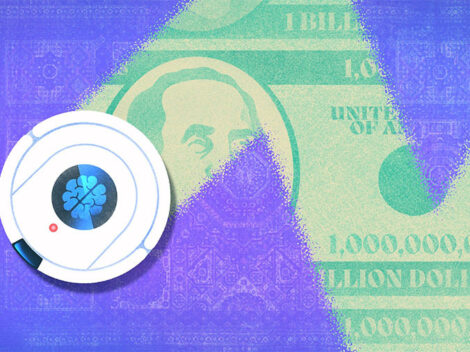A company recently took a drubbing in the public markets thanks to a notable foe: startups.
Well-funded startups, to be precise. Green Dot, a company that provides banking services with a focus on pre-paid cards, saw its share price fall from the upper $40s to the high $20 after reporting its second-quarter earnings.
Subscribe to the Crunchbase Daily
What caused the firm to lose such a sharp percent of its worth? Green Dot pointed at competition from one of our most-watched startup categories, the neo-banks.
Downgrades
Green Dot did not disappoint investors by reporting underwhelming Q2 results. In fact, the company beat on revenue ($278.3 million; GAAP) and earnings per share ($0.90; non-GAAP, diluted).
So what caused the firm to drop so sharply? The future. As the Wall Street Journal recently reported:
Shares in the bank known for issuing prepaid debit cards fell 42% to $27.42 on Thursday after it scaled back its revenue and profit outlook for the rest of the year, citing competition from financial-tech startups that offer checking and savings accounts.
How sharp were the changes that led to such a dramatic repricing of Green Dot’s equity, and therefore the company itself? Pretty sharp, as it turns out.
You can read the company’s entire “Updated Outlook” in its earnings report here, but the short version goes as follows:
- Full-year non-GAAP revenue of $1.060 billion to $1.080 billion against prior guidance of $1.114 billion to $1.134 billion. (The company employs precise revenue numbers due to the granularity of its growth.)
- Full-year adjusted EBITDA (an adjusted profit metric) of $240 million to $244 million, down from prior guidance of $255 million to $261 million.
- Full-year adjusted earnings per share (EPS) of $2.71 to $2.77, lower than the previously expected $2.82 and $2.91 in per-share adjusted EPS.
So Green Dot expects smaller revenues, lower adjusted profit, and slimmer profit-per-share. Investors reacted by hitting the “sell” button. Let’s return now to who is to blame, from the company’s perspective.
Who Is To Blame?
Companies like Chime, Acorns, and others are at fault, it seems. According to the same WSJ article, Green Dot’s CEO said the following:
Several so-called neobanks flush with new rounds of venture capital [are] spending a record amount of marketing dollars to convert customers to their largely free bank account offerings. […] There’s little doubt in our minds that the increased marketing spend from so many competitors in aggregate is taking its toll on our new-customer acquisition.
Astute and regular readers of Crunchbase News should not be surprised at this result.
Continuing our coverage of neo-banks, we noted a slide in Mary Meeker’s Internet trends report showing that, among the startup cohort, customer acquisition costs (CAC) are rising. Why would CAC rise among neo-banking startups? In short because as more companies with more dollars pursue the same sorts of channels to reach the same sort of customers, the cost to acquire a marginal customer increases.

Startups are tasked with growth. So, when a number of startups target the same customers, they are going up against companies with similar charters (fast growth) and bank accounts (venture-backed).
This happens in any category where companies compete. Especially startups. The market has seen, for example, higher costs in the direct-to-consumer business space as more companies have been founded, more money invested, and the startups themselves have gone hunting for new signups in similar space.
Your Instagram feed is a good reminder about where some venture dollars go: Quip, Harrys, Hims, and more. The list and creative marketing campaigns continue.
Regarding neo-banks, recall how much money they have raised in rapid succession. From our coverage from just two months ago:
Money is chasing the [neo-banks]. Chime has raised a total of $309 million, including a $200 million round earlier this year. Robinhood has raised just under $540 million, including a $363 million round last year. SoFi has raised $2.5 billion, including $500 million this year. Acorns has raised $207 million, including $105 million last year.
To summarize, neo-banks are well-financed and in a hurry. Their hunger to buy new users and — hopefully — customers, is leading to more expensive CAC. And that’s dragging incumbent growth rates down.
The question now becomes can any of the wealthy neo-banks do what Green Dot already has: Grow, go public, and generate profit. (Green Dot had positive net income of nearly $35 million in Q2 2019. That’s more in net income than most neo-banks did in total revenue during Q2 2019, I’d reckon.)
Illustration: Li-Anne Dias.

Stay up to date with recent funding rounds, acquisitions, and more with the Crunchbase Daily.







![Illustration of a guy watering plants with a blocked hose - Global [Dom Guzman]](https://news.crunchbase.com/wp-content/uploads/quarterly-global-3-300x168.jpg)
67.1K Followers